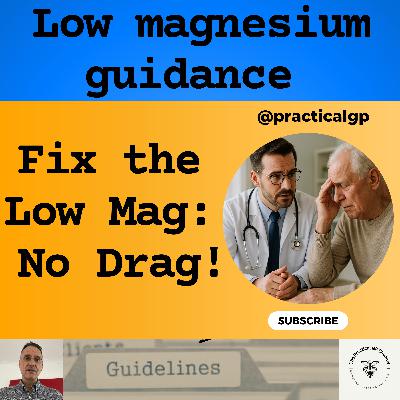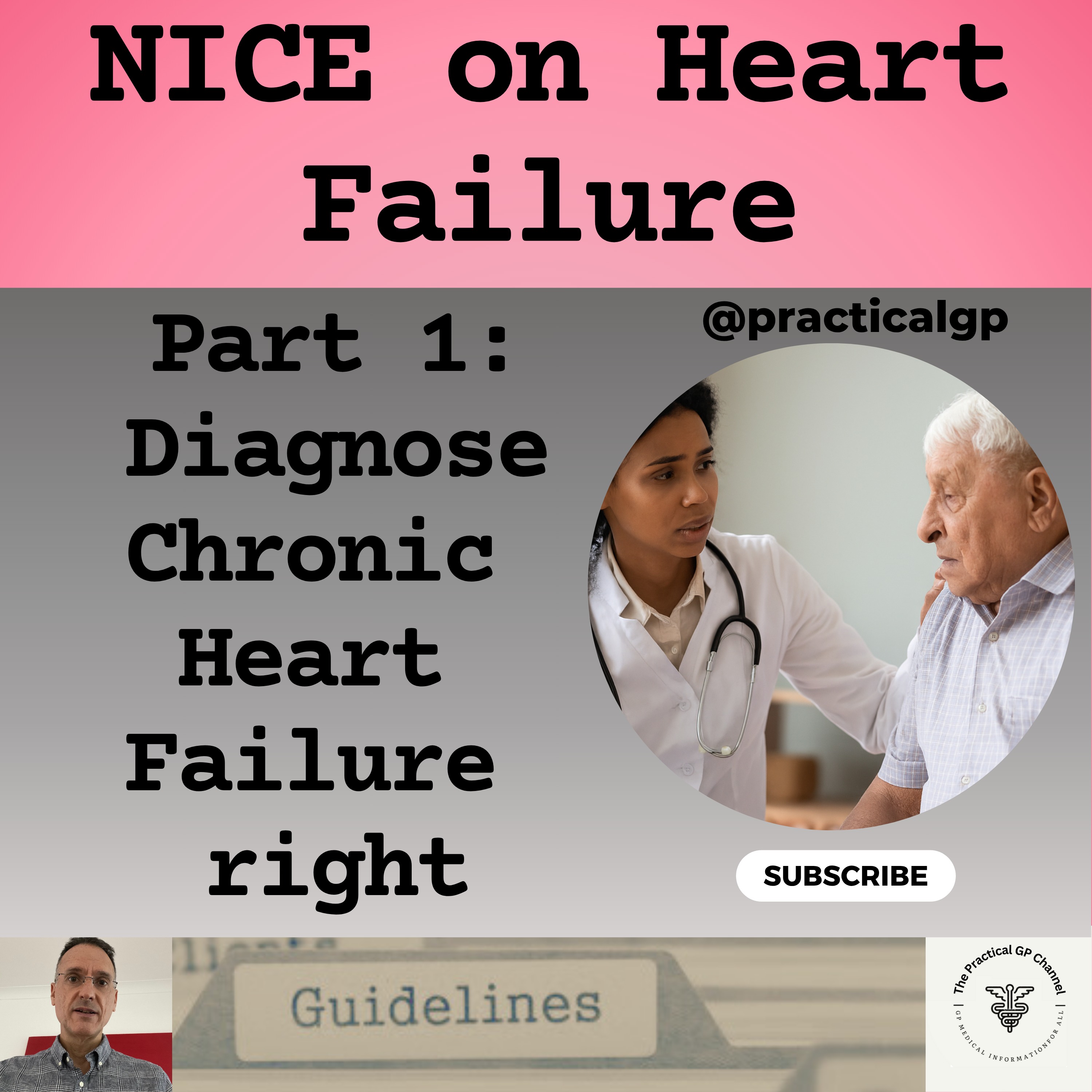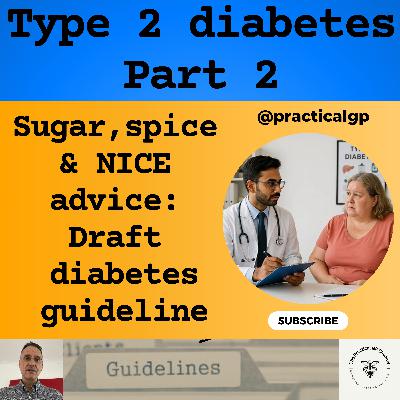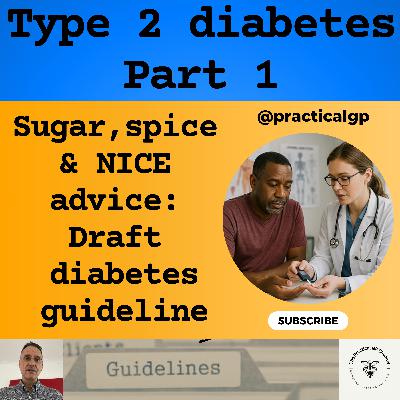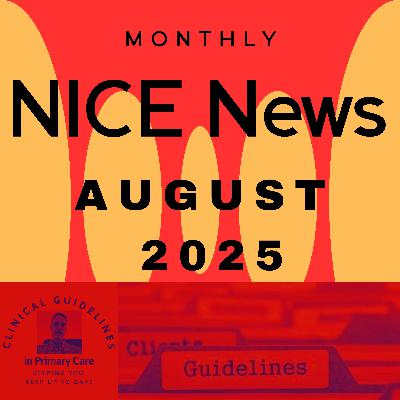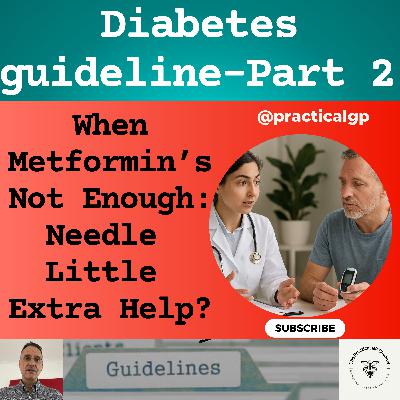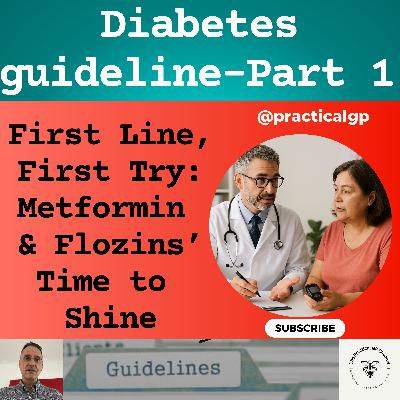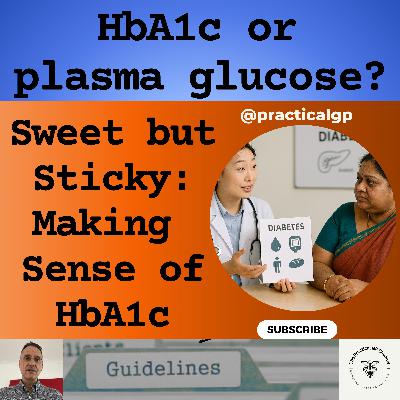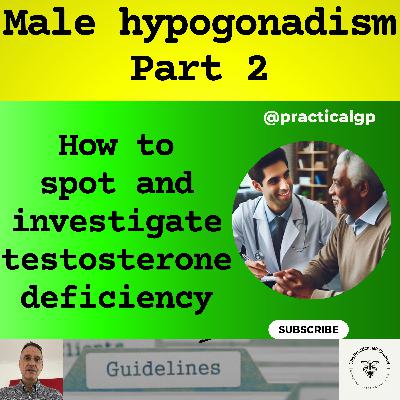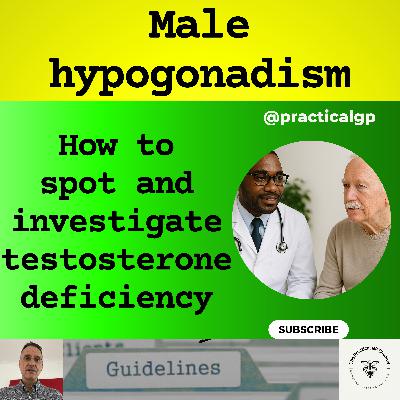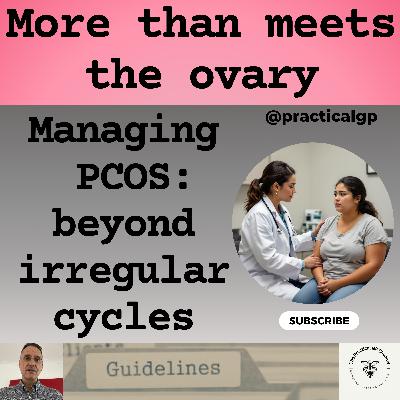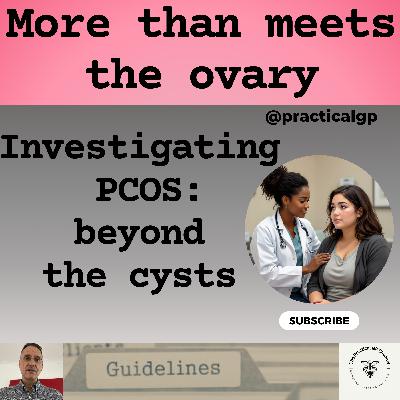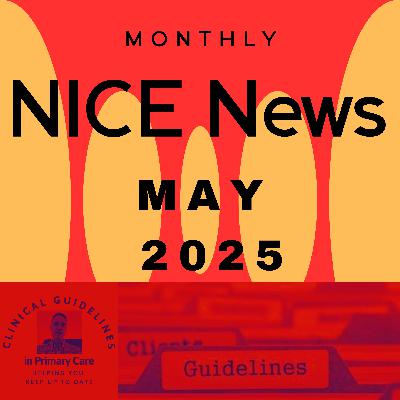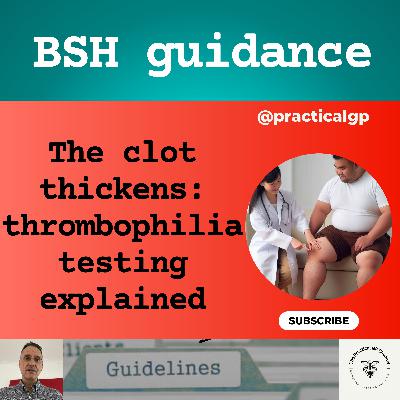Podcast - Low Magnesium Mayhem? A Calm Guide for Primary Care
Description
The video version of this podcast can be found here:
· https://youtu.be/58WdoYFUUjU
This channel may make reference to guidelines produced by a number of NHS organisations. The content on this channel reflects my professional interpretation/summary of the guidance and I am in no way affiliated with, employed by or funded/sponsored by them.
My name is Fernando Florido (also known as Juan Fernando Florido Santana), a GP in the UK. In this episode, I will go through the assessment and management of hypomagnasemia, focusing on what is relevant in Primary Care only. For this advice I have looked at the published guidance by NHS Dorset, NHS Kent and Medway, NHS Lanarkshire, Gloucestershire Hospitals NHS Trust, and Royal Cornwall Hospitals NHS Trust. The links to this guidance can be found below.
I am not giving medical advice; this video is intended for health care professionals, it is only my summary and my interpretation of the guidelines and you must use your clinical judgement.
Intro / outro music: Track: Halfway Through — Broke In Summer [Audio Library Release]
- Music provided by Audio Library Plus
- Watch: https://youtu.be/aBGk6aJM3IU
- Free Download / Stream: https://alplus.io/halfway-through
There is a podcast version of this and other videos that you can access here:
Primary Care guidelines podcast:
· Redcircle: https://redcircle.com/shows/primary-care-guidelines
· Spotify: https://open.spotify.com/show/5BmqS0Ol16oQ7Kr1WYzupK
· Apple podcasts: https://podcasts.apple.com/gb/podcast/primary-care-guidelines/id1608821148
There is a YouTube version of this and other videos that you can access here:
- The Practical GP YouTube Channel:
https://youtube.com/@practicalgp?si=ecJGF5QCuMLQ6hrk
The link to the guideline by NHS Dorset can be found here:
The link to the guideline by NHS Kent and Medway can be found here:
· https://www.dgsdvhformulary.nhs.uk/media/1168/hypomagnesaemia-in-adults-primary-care-guide.pdf
The link to the guideline by NHS Lanarkshire can be found here:
· https://rightdecisions.scot.nhs.uk/media/1539/hypomagnesaemia-in-primary-or-secondary-care.pdf
The link to the guideline by Gloucestershire Hospitals NHS Trust can be found here:
· https://www.gloshospitals.nhs.uk/media/documents/Hypomagnesaemia_jcPg0oV.pdf
The link to the guideline by Royal Cornwall Hospitals NHS Trust can be found here:
The link to the guideline by Worcestershire Acute Hospitals NHS Trust can be found here:
· https://apps.worcsacute.nhs.uk/KeyDocumentPortal/Home/DownloadFile/1559
The link to the MHRA advice on hypomagnesaemia associated to long term PPI use can be found here:
Disclaimer:
The Video Content on this channel is for educational purposes and not intended to be a substitute for professional medical advice, diagnosis, or treatment. Always seek the advice of your physician or other qualified health provider with any questions you may have regarding a medical condition. Never disregard professional medical advice or delay in seeking it because of something you have read or seen on this YouTube channel. The statements made throughout this video are not to be used or relied on to diagnose, treat, cure or prevent health conditions.
In addition, transmission of this Content is not intended to create, and receipt by you does not constitute, a physician-patient relationship with Dr Fernando Florido, his employees, agents, independent contractors, or anyone acting on behalf of Dr Fernando Florido.
Transcript
If you are listening to this podcast on YouTube, for a better experience, switch to the video version. The link is in the top right corner of the video and in the episode description.
Hello and welcome, I am Fernando, a GP in the UK. Today, we will go through the assessment and management of hypomagnesemia, focusing on what is relevant in Primary Care only. For this advice I have looked at the published guidance by a number of NHS organisations in the UK including Dorset, Lanarkshire, Gloucestershire, Cornwall and Kent and Medway. The links to them are in the episode description.
Right, let’s jump into it.
Hypomagnesaemia is defined as a serum magnesium concentration below 0.7 mmol/L. The normal reference range for serum magnesium is between 0.7 and 1.0 or 1.05 mmol/L, depending on the guideline used.
Magnesium is the second most abundant intracellular electrolyte after potassium, and is an essential cofactor in numerous enzyme systems. It also regulates the transport of calcium and potassium across cell membranes, contributing to neuromuscular conduction, muscle contraction, and cardiac rhythm.
The majority of total body magnesium is stored in bone and soft tissue and only around 1% is in extracellular fluid. Therefore, serum levels may not accurately reflect total body stores. It is possible to see a normal serum level when there is a total body magnesium deficit like in a chronic magnesium deficiency secondary to inadequate dietary magnesium. The reverse, that is, a low serum level and normal total body magnesium, is also possible and is usually seen with drugs which increase excretion of magnesium. Additionally, approximately 25% of plasma magnesium is bound to albumin, so high or low albumin states can also affect the magnesium levels.
Changes in magnesium levels usually occur gradually over months or years and symptoms are often absent, particularly when serum levels are only mildly reduced. They become more common when concentrations fall below 0.5 mmol/L, but there are times when they may also occur in the 0.5–0.7 mmol/L range.
The most common symptoms are:
Muscular and mobility symptoms, including muscle weakness, tremors, ataxia, spasms, fasciculations.
Neurological symptoms, including dizziness, paraesthesia, hallucinations, delirium, seizures, depression, confusion, and coma.
Cardiovascular symptoms, including ECG abnormalities, arrhythmias, and increased sensitivity to digoxin.
Metabolic effects including altered glucose homeostasis, and associations with hypocalcaemia and hypokalaemia.
And finally, other symptoms such as anorexia, nausea, vomiting, and fatigue,
But let’s go back for a moment and ask, why is low magnesium associated with hypocalcaemia and hypokalaemia?
Low magnesium can lead to hypocalcaemia because magnesium is required for the release of PTH. When magnesium is very low, PTH secretion decreases, which leads to reduced calcium reabsorption in the kidneys and reduced calcium release from bone, resulting in low calcium levels.
And what about hypokalaemia? Here the mechanism is connected cellular pumps that regulate intra and extracellular potassium homeostasis which leads to increased renal potassium loss, causing potassium levels to decrease.
Both the hypocalcaemia and hypokalaemia may be refractory to treatment until magnesium is corrected
Let’s now look at the causes and risk factors of hypomagnesemia.
The first cause is Reduced Intake, reduced Absorption or increased gut losses like in:
- Malabsorption (including coeliac disease, C

